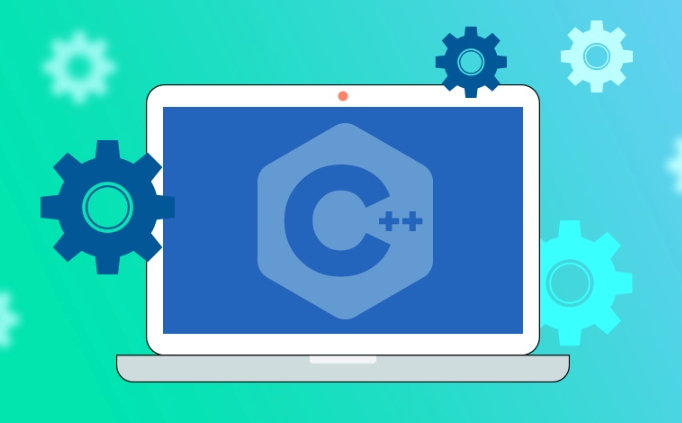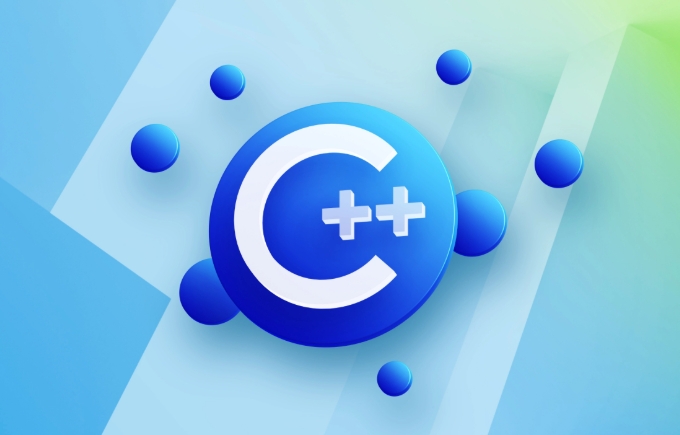The switch case of C is more suitable for handling multiple fixed value branches. The basic structure includes integer variables in switch brackets, constant expressions after each case and corresponding execution code. Finally, default can be added to deal with unmatched cases. Note when using: 1. The variable type must be an integer after switch; 2. It must be a constant after each case; 3. The lack of break will cause a "penetration" error; 4. Braces must be added when defining variables. In practical applications, switch is clearer and more efficient than if else, and is suitable for menu selection, status code processing and other scenarios.

When writing a switch case statement for C, many people will think that it is similar to if else at first, but in fact it is more suitable for handling branch judgments with multiple fixed values. Using it well can make your code clearer and more efficient.

Basic structure: How to write a switch case
The switch statement of C is used to test whether a variable is equal to one of multiple values, each value corresponding to a case branch. Finally, a default branch is usually added as a guarantee.

int day = 2;
switch (day) {
case 1:
cout << "Monday";
break;
case 2:
cout << "Tuesday";
break;
case 3:
cout << "Wednesday";
break;
default:
cout << "Invalid day";
}A few points to note:
- The variable type in the brackets after
switchmust be an integer (such asint,char, not a floating point number). - Each
casemust be followed by a constant expression, not a variable. - Without
break, the nextcasewill continue to be executed, which is called "fall-through". Sometimes it will be used intentionally, but in most cases it is prone to errors.
Practical application: When should I use switch instead of if else
When you encounter multiple fixed value judgments, such as menu selection, status code processing, and enumeration value judgment, it is more appropriate to use switch .

For example: User input number selection operation:
int choice;
cout << "Enter your choice (1-3): ";
cin >> choice;
switch (choice) {
case 1:
cout << "You selected New Game\n";
break;
case 2:
cout << "You selected Load Game\n";
break;
case 3:
cout << "You selected Exit\n";
break;
default:
cout << "Invalid choice\n";
} In this case, it can be implemented with if else , but the code will appear lengthy and the logic will not be as intuitive as switch .
Notes: Common Errors and Pit Avoidance Guide
Forgot to write break : This is one of the most common mistakes. If a case does not have a break, the program will continue to execute the contents of the next case.
switch (value) { case 1: cout << "One"; // No break case 2: cout << "Two"; // It will also be executed here}case is not followed by a constant : for example
case x:is not allowed, x must be a constant or a literal.default is optional but recommended to add : Although syntax is not mandatory, for robustness, it is best to add cases where unexpected values ??are handled.
Braces can be omitted : If you define a variable after each case, you need to add
{}yourself, otherwise an error will be reported in the compilation.case 1: int x = 10; // Error cout << x;Correct writing:
case 1: { int x = 10; cout << x; break; }
Basically that's it. By mastering the basic structure and several common problems, you can flexibly use
switch casein the appropriate scenario.The above is the detailed content of C switch case example. For more information, please follow other related articles on the PHP Chinese website!

Hot AI Tools

Undress AI Tool
Undress images for free

Undresser.AI Undress
AI-powered app for creating realistic nude photos

AI Clothes Remover
Online AI tool for removing clothes from photos.

Clothoff.io
AI clothes remover

Video Face Swap
Swap faces in any video effortlessly with our completely free AI face swap tool!

Hot Article

Hot Tools

Notepad++7.3.1
Easy-to-use and free code editor

SublimeText3 Chinese version
Chinese version, very easy to use

Zend Studio 13.0.1
Powerful PHP integrated development environment

Dreamweaver CS6
Visual web development tools

SublimeText3 Mac version
God-level code editing software (SublimeText3)
 How to develop AI-based text summary with PHP Quick Refining Technology
Jul 25, 2025 pm 05:57 PM
How to develop AI-based text summary with PHP Quick Refining Technology
Jul 25, 2025 pm 05:57 PM
The core of PHP's development of AI text summary is to call external AI service APIs (such as OpenAI, HuggingFace) as a coordinator to realize text preprocessing, API requests, response analysis and result display; 2. The limitation is that the computing performance is weak and the AI ecosystem is weak. The response strategy is to leverage APIs, service decoupling and asynchronous processing; 3. Model selection needs to weigh summary quality, cost, delay, concurrency, data privacy, and abstract models such as GPT or BART/T5 are recommended; 4. Performance optimization includes cache, asynchronous queues, batch processing and nearby area selection. Error processing needs to cover current limit retry, network timeout, key security, input verification and logging to ensure the stable and efficient operation of the system.
 C bit manipulation example
Jul 25, 2025 am 02:33 AM
C bit manipulation example
Jul 25, 2025 am 02:33 AM
Bit operation can efficiently implement the underlying operation of integers, 1. Check whether the i-th bit is 1: Use n&(1
 C function example
Jul 27, 2025 am 01:21 AM
C function example
Jul 27, 2025 am 01:21 AM
Functions are the basic unit of organizing code in C, used to realize code reuse and modularization; 1. Functions are created through declarations and definitions, such as intadd(inta,intb) returns the sum of the two numbers; 2. Pass parameters when calling the function, and return the result of the corresponding type after the function is executed; 3. The function without return value uses void as the return type, such as voidgreet(stringname) for outputting greeting information; 4. Using functions can improve code readability, avoid duplication and facilitate maintenance, which is the basic concept of C programming.
 C decltype example
Jul 27, 2025 am 01:32 AM
C decltype example
Jul 27, 2025 am 01:32 AM
decltype is a keyword used by C 11 to deduce expression types at compile time. The derivation results are accurate and do not perform type conversion. 1. decltype(expression) only analyzes types and does not calculate expressions; 2. Deduce the variable name decltype(x) as a declaration type, while decltype((x)) is deduced as x due to lvalue expression; 3. It is often used in templates to deduce the return value through tail-set return type auto-> decltype(t u); 4. Complex type declarations can be simplified in combination with auto, such as decltype(vec.begin())it=vec.begin(); 5. Avoid hard-coded classes in templates
 C fold expressions example
Jul 28, 2025 am 02:37 AM
C fold expressions example
Jul 28, 2025 am 02:37 AM
C folderexpressions is a feature introduced by C 17 to simplify recursive operations in variadic parameter templates. 1. Left fold (args...) sum from left to right, such as sum(1,2,3,4,5) returns 15; 2. Logical and (args&&...) determine whether all parameters are true, and empty packets return true; 3. Use (std::cout
 C binary search tree example
Jul 28, 2025 am 02:26 AM
C binary search tree example
Jul 28, 2025 am 02:26 AM
ABinarySearchTree(BST)isabinarytreewheretheleftsubtreecontainsonlynodeswithvalueslessthanthenode’svalue,therightsubtreecontainsonlynodeswithvaluesgreaterthanthenode’svalue,andbothsubtreesmustalsobeBSTs;1.TheC implementationincludesaTreeNodestructure
 C range-based for loop tutorial
Jul 27, 2025 am 12:49 AM
C range-based for loop tutorial
Jul 27, 2025 am 12:49 AM
C's range-basedfor loop improves code readability and reduces errors by simplifying syntax. Its basic structure is for(declaration:range), which is suitable for arrays and STL containers, such as traversing intarr[] or std::vectorvec. Using references (such as conststd::string&name) can avoid copy overhead and can modify element content. Notes include: 1. Do not modify the container structure in the loop; 2. Ensure that the range is effective and avoid the use of freed memory; 3. There is no built-in index and requires manual maintenance of the counter. Mastering these key points allows you to use this feature efficiently and safely.
 C call python script from C example
Jul 26, 2025 am 07:00 AM
C call python script from C example
Jul 26, 2025 am 07:00 AM
Calling Python scripts in C requires implementation through PythonCAPI. First, initialize the interpreter, then import the module and call the function, and finally clean up the resources; the specific steps are: 1. Initialize the Python interpreter with Py_Initialize(); 2. Load the Python script module with PyImport_Import(); 3. Obtain the objective function through PyObject_GetAttrString(); 4. Use PyObject_CallObject() to pass parameters to call the function; 5. Call Py_DECREF() and Py_Finalize() to release the resource and close the interpreter; in the example, hello is successfully called






